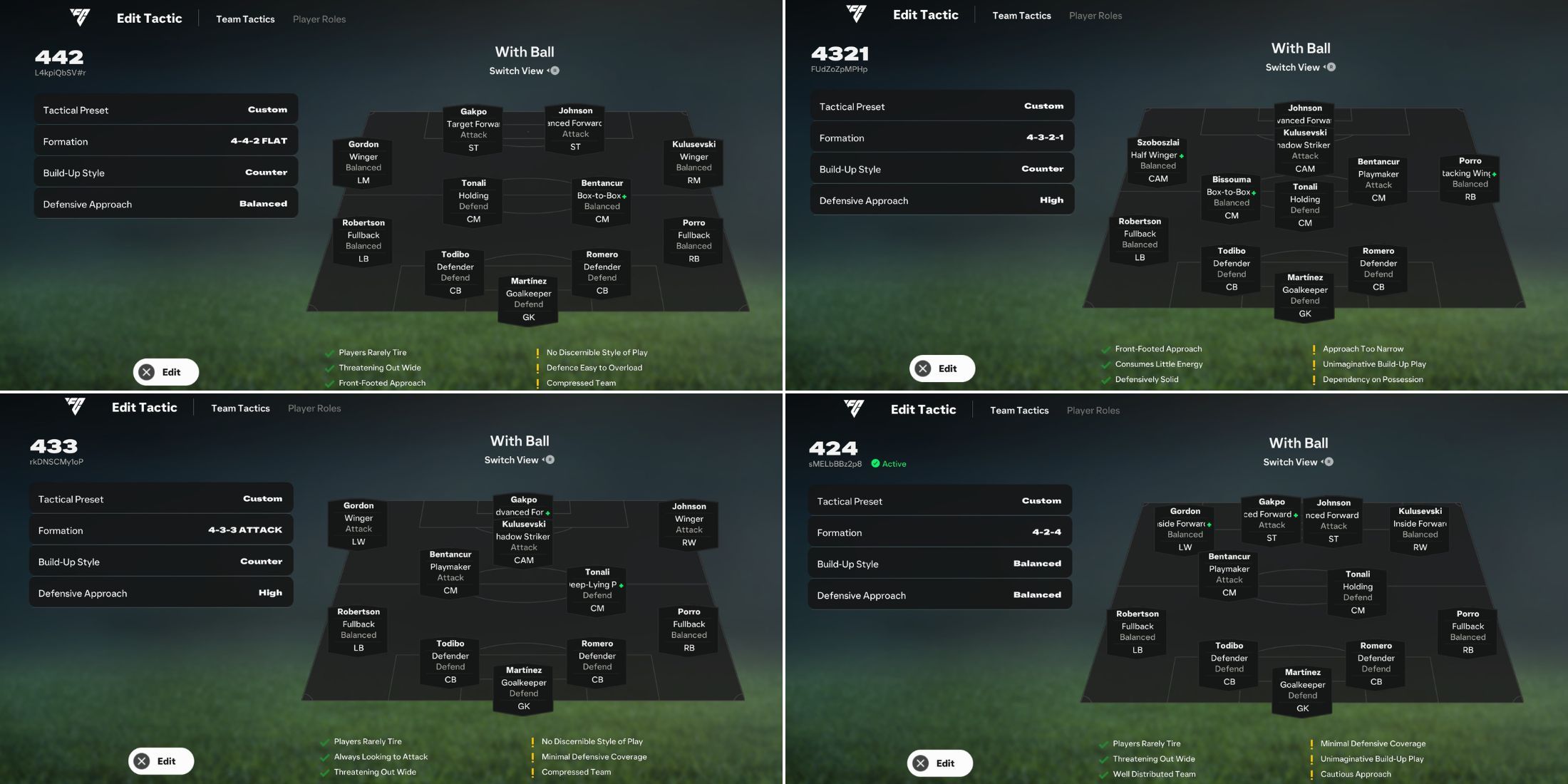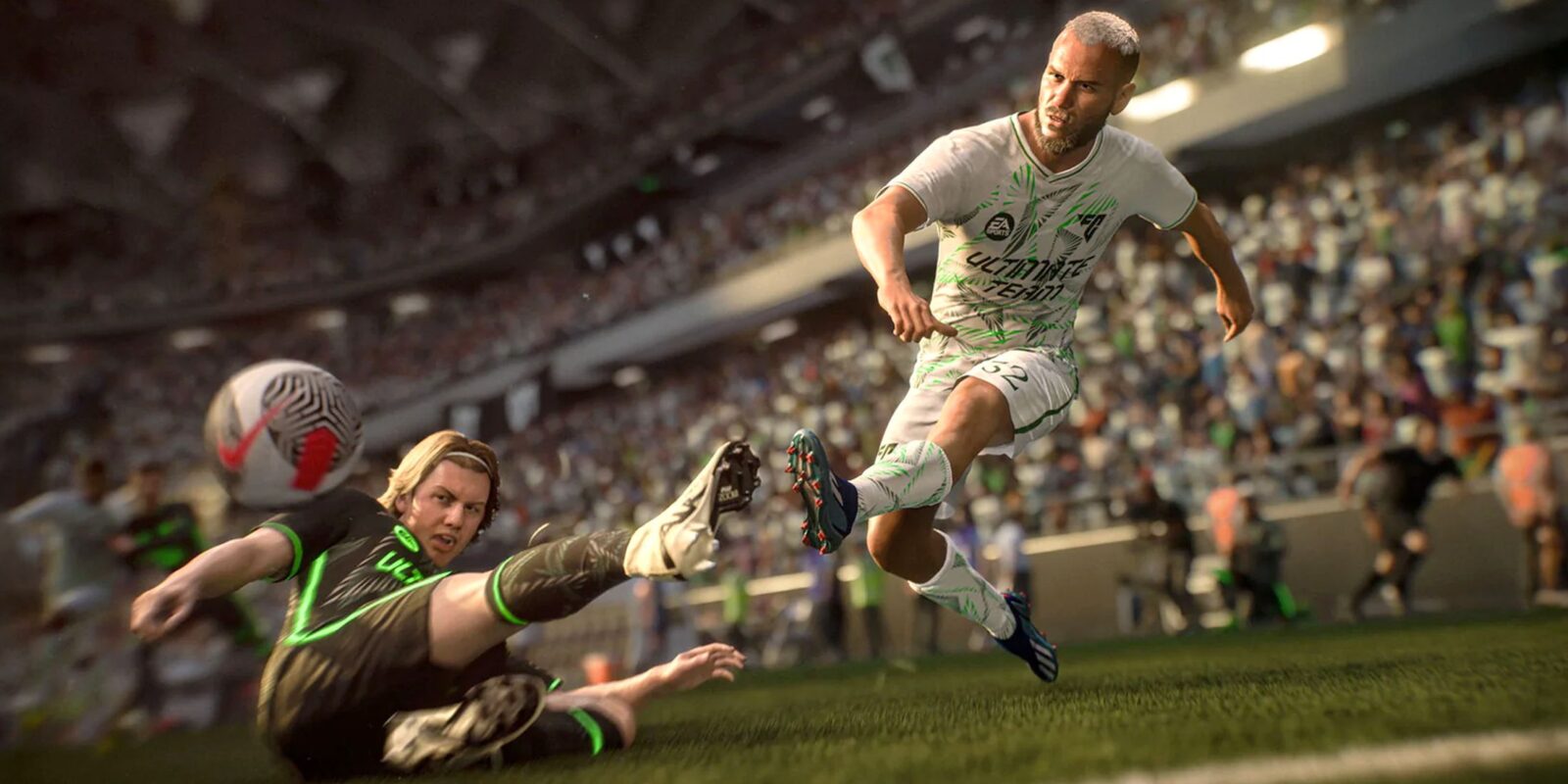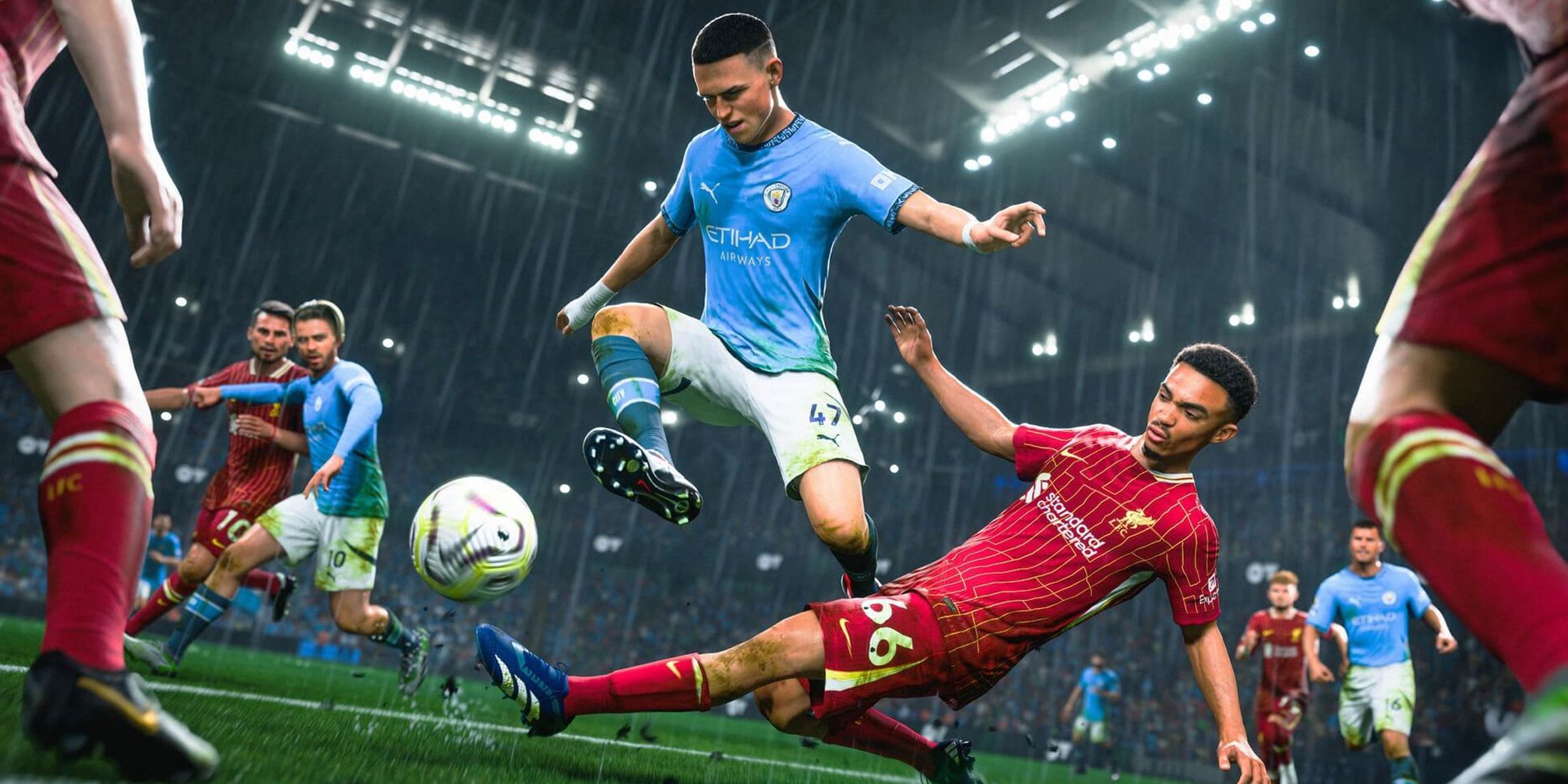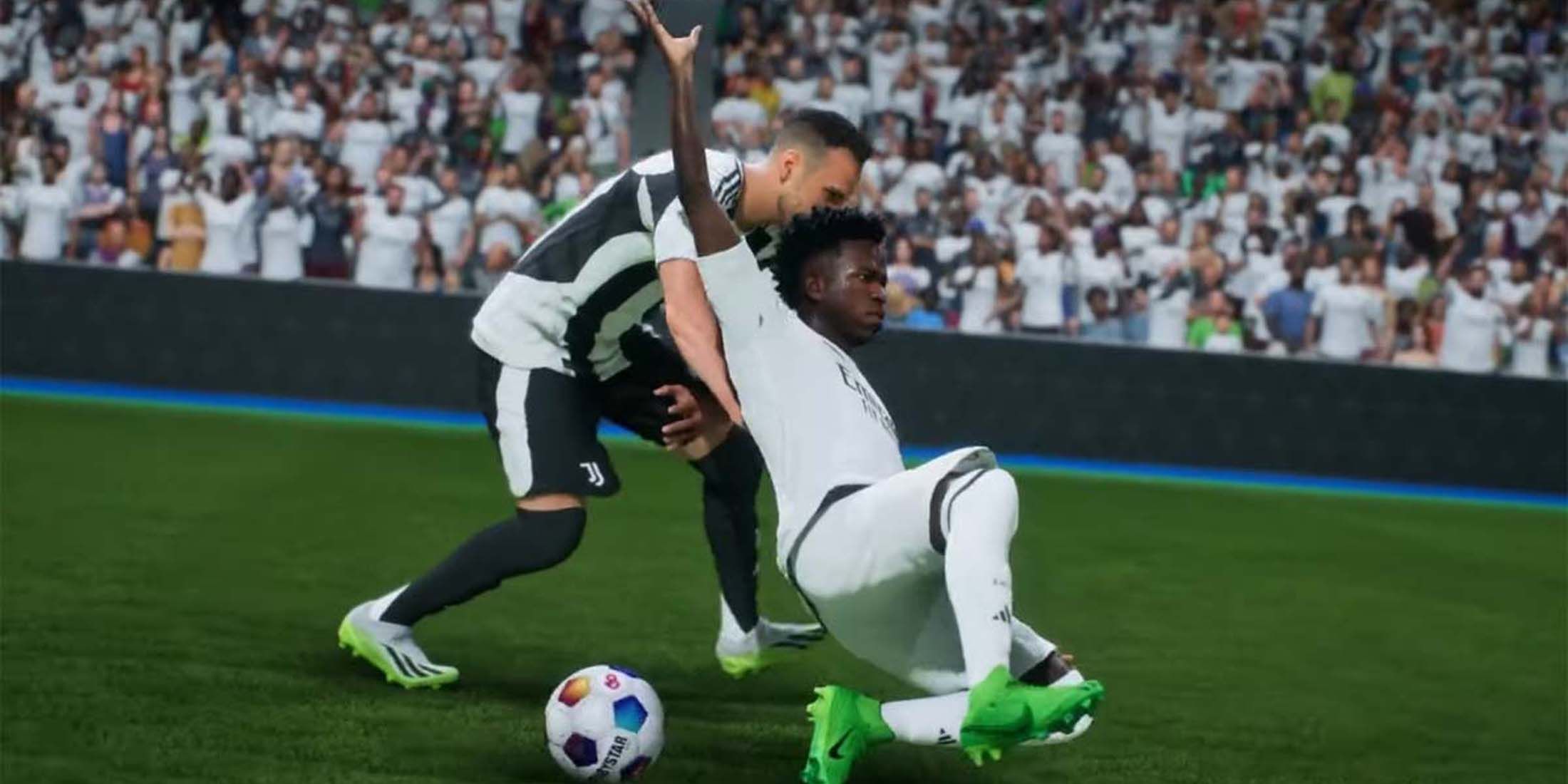With the launch of EA Sports FC 25, the tactical system has been redefined using the new FC IQ technology, bringing it closer to real-life football. This innovation enables precise tactical adjustments, much like a real manager would make, including the introduction of Player Roles, which enhance realism and authenticity.

Related
5 Best Formations To Use In EA Sports FC 25 Ultimate Team, Ranked
Using smart formations in Ea Sports FC 25 Ultimate Team will help players focus their squads, be it an offensive overload or a counter-attack set-up.
Player Roles in EA FC 25 allow you to control and fine-tune each player’s positioning, determining their movement when you’re in control and when you’re not. This system leverages AI-driven behaviors to replicate real-life decision-making, giving players greater flexibility in shaping their tactics to match their playstyle. When it comes to defense, maintaining proper positioning is crucial to avoiding vulnerabilities. That said, here are the best Player Roles to optimize your defensive strategy.
Best Right & Left Back Player Roles In EA Sports FC 25
EA FC 25‘s Right Backs and Left Backs play a crucial role in defending against wing attacks while also contributing to counterattacks. They help transition the ball out from their own goal with precise passes and, most importantly, maintain the defensive line when the opposing team is in possession. That is why the Player Role you will use for them will depend on your playing style.
Fullback – Balanced
To defend effectively in EA Sports FC 25, maintaining a well-organized defensive line is crucial, whether you’re directly controlling your players or relying on their positioning within your selected area. One of the best ways to achieve this is by assigning your Right Backs (RB) and Left Backs (LB) the Fullback – Balanced Player Role. This role helps them prioritize defensive stability by staying back and holding the line, preventing gaps that opposing wingers could exploit. Additionally, since they remain positioned fairly wide, they can assist in playing out from the back or serve as a reliable passing option when under heavy pressure in your half.
Setting their role to Balanced allows them to push slightly into midfield when needed — helping mark incoming opponents or play deeper without pulling Center Backs out of position. However, if you prefer a more defensive approach and want to limit their movement along the wing, switching to the Defend option instead of Balanced may be a better choice.
Wingback – Balanced
If you rely on wing support for your attacks, your Right and Left Backs may benefit from the Wingback – Balanced Player Role. This role provides the flexibility to push forward beyond the halfway line to aid in attacks while still tracking back to defend. Since this role leans more toward offense than defense, it’s crucial to stay aware of the attacking play’s outcome. You’ll need to be ready to stop counterattacks frequently, especially on the wings.
If your Right and/or Left Back is fast and has high stamina, this role is ideal. It prevents excessive fatigue while maintaining enough speed for continuous movement up and down the flank. This allows them to efficiently contribute to attacks by adding extra support for players and speed while also ensuring consistent defensive coverage in their zone.

Related
EA Sports FC 25: Super Sub Player Items, Explained
EA Sports FC 25 introduces Super Sub Player Items to boost Ultimate Team squads for a final push toward victory. Here’s all you need to know.
Best Center Back Player Roles In EA Sports FC 25
For Center Backs in EA FC 25, the best strategy is to assign complementary Player Roles to each one. This helps prevent both defenders from making the same movements, which could leave the defensive line exposed to enemy attacks. Fortunately, the game has several Player Role options for CBs that can be adjusted to each play style.
Defender – Balanced
If you need a defender who can hold the defensive line and excel at stopping attacks, the Defender – Balanced Role is the best choice — especially for players with ++ familiarity. This role is crucial for maintaining defensive stability, ensuring a Center Back (CB) is always positioned inside the box during attacking plays while staying back to intercept an opposing striker when needed. These defenders rely on physicality, passing, and strong defensive skills, allowing them to use their bodies to shield the ball, apply pressure on attackers, and make clean tackles without committing fouls.
Stopper – Balanced
A more refined but significantly more challenging variation of the Center Back role is the Stopper – Balanced position. This role allows defenders to step out of position slightly to challenge opponents, intercept passes, and apply pressure. However, this comes at the risk of destabilizing the defensive line, potentially leaving gaps for the opposition to exploit. Since pushing forward too aggressively can leave the team vulnerable, this ball-winning Center Back role requires strong defensive awareness. Players must carefully manage positioning, as one CB will move forward in situations where maintaining a solid backline would typically be preferable.
Despite the risks, this role can be highly effective for players who excel at defending and want to pair the Stopper with a more traditional Defender role to create a balanced defensive setup. However, it’s crucial to monitor the movements of the Right and Left Backs to ensure they don’t push too far up the flanks, as this could leave the backline exposed with only one defender.
Ball-Playing Defender – Defend
The Ball-Playing Defender – Defender role is ideal for players who need extra support when playing out from the back. This role allows the Center Back (CB) to position slightly higher up the field, helping maintain possession and linking up with midfielders. Similar to the Stopper role, this position requires careful playmaking awareness. While the defender won’t stray far from the defensive line, losing possession or misplacing a pass can create dangerous scoring opportunities for the opposition.
However, a Ball-Playing Defender can provide greater ball control and distribution from the back. If the CB has strong passing and pace, they can be highly effective in possession — whether holding the ball, executing long passes, or supporting the attack — without abandoning their primary role of defending the box and preventing goals.













Leave a Reply